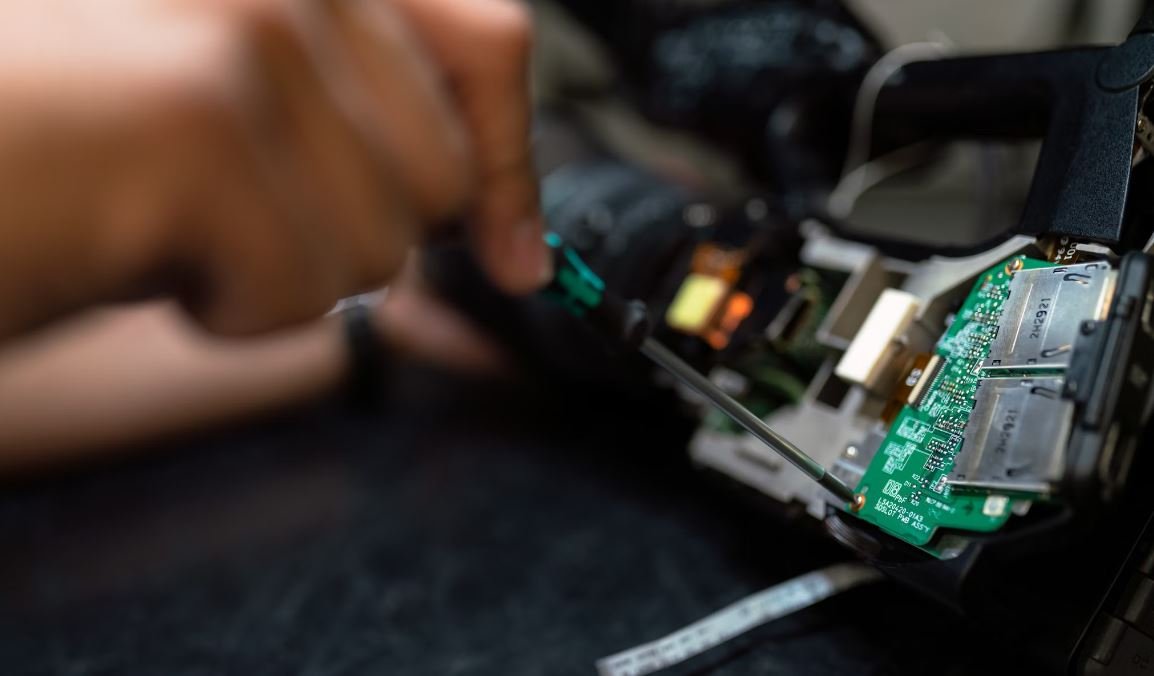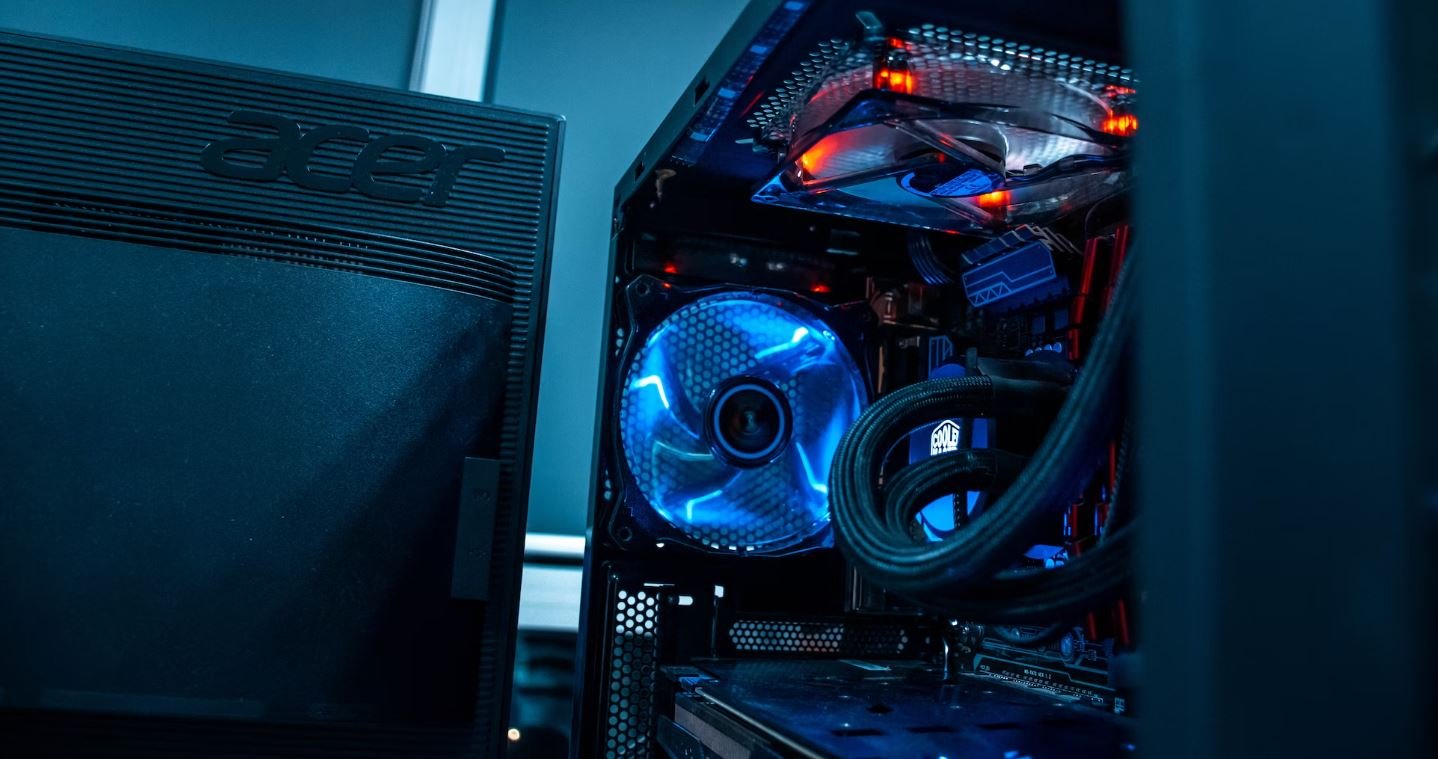Film vs Electrolytic Capacitors
Capacitors are fundamental components in electronic circuits, providing the ability to store and release electrical energy. Two common types of capacitors are film and electrolytic capacitors. While they both serve the purpose of storing electrical charge, there are important differences between them that make each suitable for specific applications.
Key Takeaways:
- Film and electrolytic capacitors have different construction, dielectric materials, and suitable applications.
- Electrolytic capacitors are generally more cost-effective and have higher capacitance values, making them ideal for high energy storage applications.
- Film capacitors are known for their reliability, stability, and low leakage current, making them ideal for precision circuits and audio applications.
Construction and Dielectric Materials
Film capacitors are typically made by sandwiching a thin dielectric film between two metal foils, with the entire assembly then rolled or stacked together. The dielectric material used can be polyester, polypropylene, or PTFE, depending on the required performance characteristics. Film capacitors are available in a wide range of capacitances, voltages, and tolerances, making them versatile components in electronic design.
*Film capacitors are known for their excellent electrical insulation properties and ability to handle high voltages.*
On the other hand, electrolytic capacitors have an electrolyte (usually a conducting liquid or gel) in direct contact with the dielectric layer. They are made by rolling up two layers of aluminum foil with a thin oxide layer acting as the dielectric. Electrolytic capacitors provide larger capacitance values compared to film capacitors and are often used in power supply circuits due to their ability to store significant amounts of energy.
*Electrolytic capacitors’ large capacitance values make them suitable for applications that require high energy storage.*
Applications and Suitability
The applications of film capacitors are diverse, given their high reliability, stability, and low leakage current. They are commonly used in precision circuits, analog signal processing, and audio applications where high-quality performance is crucial. Film capacitors also find utility in high-frequency applications, as their low ESR (Equivalent Series Resistance) allows them to handle rapid voltage changes effectively.
*With their low losses and high-quality performance, film capacitors are often the preferred choice for audio enthusiasts seeking premium sound reproduction.*
Electrolytic capacitors, especially aluminum electrolytic capacitors, are widely employed in power supply circuits for smoothing and energy storage. They offer high capacitance values and are capable of handling large ripple currents. Due to their lower cost compared to film capacitors, electrolytic capacitors are often chosen in applications where cost-effectiveness is a primary concern.
*Electrolytic capacitors provide cost-effective solutions when large capacitance values are required for power supply circuits.*
Comparison Table: Film Capacitors vs Electrolytic Capacitors
| Film Capacitors | Electrolytic Capacitors | |
|---|---|---|
| Construction | Thin dielectric film sandwiched between metal foils | Aluminum foil with a thin oxide dielectric layer |
| Dielectric Material | Polyester, Polypropylene, PTFE, etc. | Electrolyte (conducting liquid or gel) |
| Applications | Precision circuits, audio applications, high-frequency circuits | Power supply circuits, energy storage, smoothing |
| Cost | Relatively higher | Relatively lower |
Effectiveness Comparison
When comparing the effectiveness of film and electrolytic capacitors, several factors come into play:
- Capacitance: Electrolytic capacitors offer larger capacitance values, making them suitable for applications requiring high energy storage.
- Reliability: Film capacitors are known for their excellent reliability and stability, making them a preferred choice for critical applications.
- Leakage Current: Film capacitors have very low leakage current, which is important in applications where accuracy is crucial.
- ESR: Electrolytic capacitors exhibit higher Equivalent Series Resistance compared to film capacitors, affecting their performance in high-frequency applications.
Conclusion
In summary, film and electrolytic capacitors have distinct characteristics that make them suitable for different applications. While film capacitors excel in precision circuits, audio applications, and high-frequency circuits, electrolytic capacitors are commonly employed in power supply circuits and applications that demand high capacitance values. It is essential to consider the specific requirements of each application to choose the most fitting capacitor for optimal performance.

Common Misconceptions
Misconception 1: Film capacitors are always better than electrolytic capacitors
One common misconception people have is that film capacitors are always superior to electrolytic capacitors. While it is true that film capacitors have some advantages in certain applications, electrolytic capacitors also have their own unique benefits.
- Film capacitors offer better overall frequency response.
- Electrolytic capacitors tend to have higher capacitance values, making them suitable for applications that require larger storage capacities.
- Electrolytic capacitors can handle higher voltage levels compared to film capacitors.
Misconception 2: Film capacitors are more reliable than electrolytic capacitors
Another misconception is that film capacitors are more reliable than electrolytic capacitors. While film capacitors do tend to have higher lifespans and lower failure rates, it is important to consider the specific application and operating conditions.
- Film capacitors are less prone to aging and deterioration over time.
- Electrolytic capacitors require periodic reforming to maintain their performance.
- Electrolytic capacitors can have longer lifespans when operated within their design specifications.
Misconception 3: Film capacitors are always more expensive than electrolytic capacitors
People often assume that film capacitors are always more expensive than electrolytic capacitors. While film capacitors can be more costly for certain applications, the price difference depends on various factors such as capacitance value, voltage rating, and manufacturer.
- Low capacitance value film capacitors can be more affordable than high capacitance electrolytic capacitors.
- Film capacitors are often used in high-end audio equipment, where cost may not be a significant concern.
- Electrolytic capacitors can be cost-effective for applications that require high capacitance values.
Misconception 4: Film capacitors do not suffer from leakage like electrolytic capacitors
There is a misconception that film capacitors do not suffer from leakage issues like electrolytic capacitors. Although film capacitors generally have lower leakage currents, they are not completely immune to leakage.
- Leakage currents in film capacitors tend to be significantly lower compared to electrolytic capacitors.
- Quality film capacitors are designed with low-leakage materials and construction techniques.
- Electrolytic capacitors can suffer from higher leakage currents, particularly when they are subjected to high temperatures.
Misconception 5: Film capacitors are universally suitable for all applications
Some people believe that film capacitors are universally suitable for all applications. While film capacitors are versatile and offer excellent performance in many cases, they may not always be the best choice for every application.
- Electrolytic capacitors are often preferred in applications that require high capacitance values at lower costs.
- Some applications with high voltage ratings may require the use of electrolytic capacitors.
- Film capacitors are commonly used in precision electronics where accuracy and stability are critical.

Film vs Electrolytic Capacitors
Film capacitors and electrolytic capacitors are two common types of capacitors used in electronic circuits. While both serve the purpose of storing and releasing electrical energy, they differ in terms of construction, performance, and applications. This article explores various aspects of film and electrolytic capacitors, comparing their properties and discussing the advantages and disadvantages of each.
Film Capacitors
Film capacitors are known for their excellent stability, reliability, and long lifespan. They consist of a thin dielectric film sandwiched between two metal foils, usually made of materials like polyester (PET), polypropylene (PP), or polyphenylene sulfide (PPS). The following table provides an overview of common film capacitor types and their key characteristics.
| Type | Dielectric | Voltage Rating | Capacitance Range | Advantages |
|---|---|---|---|---|
| PET (Mylar) | Polyester | Up to 1000V | 1nF to 100µF | Low cost, compact size, good electrical properties |
| PP (Polypropylene) | Polypropylene | Up to 2000V | 100pF to 100µF | High insulation resistance, low dissipation factor |
| PPS (Polyphenylene Sulfide) | Polyphenylene sulfide | Up to 1000V | 10pF to 10µF | Excellent thermal stability, resistance to humidity |
Electrolytic Capacitors
Electrolytic capacitors, on the other hand, are characterized by their high capacitance values and compact size. They employ an electrolyte (usually a conductive liquid or gel) as one of the electrodes. The table below presents different types of electrolytic capacitors and their specific properties.
| Type | Dielectric | Voltage Rating | Capacitance Range | Advantages |
|---|---|---|---|---|
| Aluminum Electrolytic | Aluminum oxide | Up to 500V | 1µF to several Farads | High capacitance, low cost, compact size |
| Tantalum Electrolytic | Tantalum pentoxide | Up to 50V | 0.1µF to 1000µF | Stable capacitance over a wide temperature range |
| Super Capacitors (Double Layer Capacitor) | Activated carbon | Up to 2.7V | Farads (F) range | Very high energy storage, fast charging and discharging |
Comparison of Film and Electrolytic Capacitors
Now, let’s compare film and electrolytic capacitors based on specific parameters to understand their differences and applications better.
| Parameter | Film Capacitors | Electrolytic Capacitors |
|---|---|---|
| Capacitance Tolerance | High | Low |
| Temperature Stability | Excellent | Good |
| Equivalent Series Resistance (ESR) | Low | Variable (higher than film capacitors) |
| Frequency Response | Wider range | Restricted |
| Size | Large compared to electrolytic capacitors | Compact |
| Cost | Low to moderate | Low |
Applications
The choice between film capacitors and electrolytic capacitors depends on the specific requirements of an electronic circuit. The following table highlights some typical applications where film and electrolytic capacitors are often utilized.
| Application | Film Capacitors | Electrolytic Capacitors |
|---|---|---|
| Filters and Coupling | Preferred due to wider frequency response | Commonly used for low-frequency applications |
| Snubber Circuits | Provide excellent stability and fast discharge | Useful for high voltage applications |
| Power Supplies | Used for low-power applications | Ideal for high-capacitance requirements |
| Motor Run Capacitors | Commonly employed in motor applications | Not suitable due to low voltage rating |
Durability Comparison
In terms of lifespan and durability, the following table provides insights into the longevity of film and electrolytic capacitors in different operating conditions.
| Operating Condition | Film Capacitors | Electrolytic Capacitors |
|---|---|---|
| Normal Temperature and Humidity | Long lifespan | Variable depending on the type |
| High Temperature | Good stability | Reduced lifespan or reliability |
| High Humidity | Minimal impact | Potential shorter lifespan |
| High Voltage or Ripple Current | High stability | May exhibit breakdown or reduced lifespan |
Environmental Impact
Lastly, it is essential to consider the environmental impact of different capacitor types. The table below outlines the environmental aspects of film and electrolytic capacitors.
| Environmental Aspect | Film Capacitors | Electrolytic Capacitors |
|---|---|---|
| Ecological Footprint | Generally low impact | Contains hazardous materials (e.g., electrolytes) |
| Recyclability | Generally recyclable | Requires specialized recycling processes |
| Disposal | Non-hazardous | Requires proper disposal due to hazardous elements |
| Contaminant Risk | Low | Potential for electrolyte leakage |
In conclusion, film capacitors and electrolytic capacitors have their respective advantages and applications in the field of electronics. The choice between the two depends on factors such as capacitance requirements, size constraints, cost limitations, and environmental considerations. Engineers and designers must carefully evaluate these factors to select the most suitable capacitor for a given circuit or application. Understanding the unique properties and trade-offs of both film and electrolytic capacitors helps in achieving optimal circuit performance and reliability.
Frequently Asked Questions
What are film capacitors?
Film capacitors are types of capacitors that use a thin plastic film as the dielectric material. They are known for their excellent stability, high insulation resistance, and low dielectric losses.
What are electrolytic capacitors?
Electrolytic capacitors are capacitors that use an electrolyte as the dielectric material. They are polarized, meaning they have a positive and negative terminal. Electrolytic capacitors are commonly used in applications requiring high capacitance values, but they may have higher leakage currents and shorter lifetimes compared to film capacitors.
What are the main differences between film and electrolytic capacitors?
The main differences between film and electrolytic capacitors include the dielectric material used, construction, capacitance values, voltage ratings, and application areas. Film capacitors are non-polarized, have a wide range of capacitance values, and are suitable for applications that require high stability and low losses. Electrolytic capacitors, on the other hand, are polarized, have higher capacitance values, and are commonly used in power supply circuits and audio systems.
Which capacitor type is more suitable for audio applications?
Both film and electrolytic capacitors have their advantages and disadvantages in audio applications. Film capacitors are known for their excellent sound quality due to low distortion and high accuracy. They are often found in high-end audio equipment. Electrolytic capacitors, especially those designed for audio applications, can provide high capacitance values required for filtering purposes at lower cost.
Can film and electrolytic capacitors be used interchangeably?
Film and electrolytic capacitors generally have different performance characteristics and should not be used interchangeably without considering the specific requirements of the circuit. The choice between the two types depends on factors such as capacitance value, voltage rating, size constraints, desired performance, and cost.
Are film capacitors more expensive than electrolytic capacitors?
Film capacitors tend to be more expensive than electrolytic capacitors, especially for high capacitance values. This is primarily because the manufacturing process of film capacitors is more complex and requires higher precision. However, the actual price difference can vary depending on the specific capacitor specifications, brand, and market conditions.
Do film capacitors have any limitations?
While film capacitors offer excellent stability and low losses, they generally have lower capacitance values compared to electrolytic capacitors. This may limit their use in applications that require extremely high capacitance values. Additionally, film capacitors can be physically larger than electrolytic capacitors for achieving the same capacitance, which can be a constraint in space-limited designs.
Can I replace an electrolytic capacitor with a film capacitor in a circuit?
Replacing an electrolytic capacitor with a film capacitor in a circuit may be possible in some cases, but it requires careful consideration of the circuit requirements such as capacitance value, voltage rating, ripple current, and size constraints. It is recommended to consult the circuit’s specifications or seek advice from an experienced electronics engineer to ensure proper substitution.
Which capacitor type is better for high-frequency applications?
Film capacitors are generally better suited for high-frequency applications due to their low losses and excellent stability at high frequencies. They offer lower equivalent series resistance (ESR) and equivalent series inductance (ESL) compared to electrolytic capacitors. However, for very high-frequency applications, specialized capacitors like ceramic or tantalum capacitors may be more suitable.
Do film and electrolytic capacitors have similar lifetimes?
Film capacitors typically have longer lifetimes compared to electrolytic capacitors. While it is common for film capacitors to have lifetime ratings of tens of thousands of hours, electrolytic capacitors generally have shorter lifetimes, usually in the range of thousands to tens of thousands of hours. However, electrolytic capacitors designed for professional audio or critical applications may have extended lifetimes.




